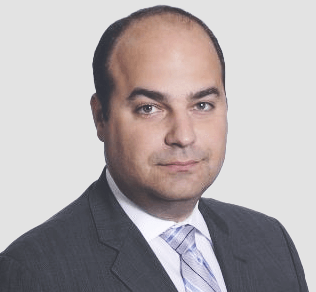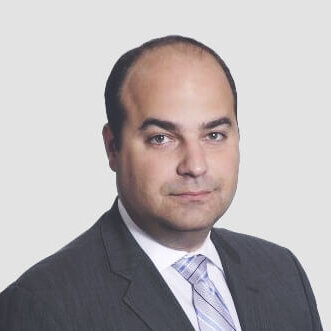
A period of high interest rates has made liquidity hard to come by for private markets managers.
According to MSCI figures, private equity distributions came in at just 8.7 percent of valuation in Q1 2024, little more than a third of the average distribution rate of 23.5 percent for the period between 2015 and 2019. Slowing distributions have had a direct impact on fundraising efforts, as LPs wait for cashflows from existing portfolios to come through before ploughing resources back into a new vintage of funds.
With liquidity at a premium, the still relatively young alternative asset ecosystem has demonstrated its ability to adapt to changing circumstances and embrace new mechanisms to generate capital and keep momentum. and embrace new mechanisms to generate capital and keep momentum.
In the fourth and final article in a series exploring the alternative routes to liquidity that managers have available, Alter Domus looks into how securitization structures, including collateralized fund obligations and rated feeder funds, have enabled managers and investors to unlock capital flows in a tight market.
Part 4: Securitization
Securitization- the bundling together of assets into a vehicle that sells shares to investors- is an established practice in fixed income markets, but has been rare in the private funds space.
The slowdown in private equity distributions and fundraising as a result of elevated interest rates, however, has supported growing interest from managers and investors in securitization as a tool to enable capital to flow into the private markets ecosystem more easily and through different channels.
In October 2024, for example, AlpInvest, the integrated private markets platform owned by the Carlyle Group, secured its second securitization with the successful close of a $1 billion collateralized fund obligation (CFO) that exceeded its $800 million target.
Private funds securitizations are still relatively uncommon, especially when compared to the high volumes of securitization deals seen in other markets, such as the issuance of collateralized loan obligations (CLOs) in the broadly syndicated loan space. Interest in private funds securitization, however, has been growing steadily in recent years and we at Alter Domus have been helping our clients navigate this, particularly through the rising interest rate cycle as other liquidity channels have tightened.
Private funds securitization: how it works
Securitizations are complex transactions, but in essence, in a private funds context involve the pooling together of LP interests in a variety of underlying private markets into a special purpose vehicle (SPVs), which then sells rated debt notes to investors.
These SPVs are organized in tranches, with different tranches then sold to investors, in line with specific investor requirements and risk appetite. Senior tranches will carry lower risk and offer more predictable returns, with the risk-reward balance shifting accordingly for lower tranches of the SPV structure.
In private funds, securitization can be executed through either a CFO structure or rated note feeder (RNF). There are important technical differences between CFOs and RNFs, but there are also broad similarities, as both structures effectively allow investors to gain exposure to private markets funds, but through a debt-like product rather than an equity investment.
The securitization channel into private markets funds is especially attractive for investors and institutions who have to consider regulatory capital requirements when deploying capital.
CFOs and RNF tranches have to receive credit ratings from ratings agencies, and as debt instruments with high credit ratings receive more favorable regulatory capital treatments than direct equity investments into private markets funds, CFOs and RNFs have proven especially appealing to insurance companies and sovereign wealth funds. The structures have been an ideal fit for these institutions, who have wanted to grow private markets exposure without throwing their regulatory capital ratios out of whack.
CFOs and RNFs, however, have also been gaining appeal with other investors, who do not have to comply with strict regulatory capital rules, as the tranches within the vehicles enable investors to tailor private markets exposure to their particular investment requirements.
For managers, meanwhile, the structures have provided additional routes into new investor bases at a time when capital is at a premium, and traditional fundraising options have been constrained.
Operational excellence essential
Taking advantage of the potential liquidity that securitization can provide, however, requires a manager to have robust back-office rails in place to manage the complexities and operational demands that come with CFO and RNF vehicles.
The reporting, disclosure and fund accounting demands that come with a CFO or RNF are at another level when compared to conventional, 10-year closed ended LP-fund requirements.
For starters, receiving credit rating for a CFO or RNF requires a manager to provide high volumes of often unpublished information on financials, governance, risk management and business strategy and earnings forecasts. Applicants will also often be asked to make detailed presentations to ratings analysts before a rating is issued. The demands the application process places on back-office teams is not to be underestimated.
The day-to-day management and accounting of a CFO or RNF will also require significant back-office support from a trusted partner like Alter Domus, with managers obliged to keep track of payment waterfalls to various investors, according to which tranches of the structure that they hold, as well as ensuring that the sponsors or originators of the securitization maintain the necessary risk retention thresholds in the securitized vehicle to comply with regulatory requirements.
Help at hand
An experienced fund administrator that is well-versed in the mechanics of securitizations and private markets can provide managers and their investors with invaluable bandwidth and experience when it comes to setting up and operating an CFO or RNF effectively.
Alter Domus, for example, has more than US$2.5 trillion of assets under administration and network of 39 offices in 23 jurisdictions, giving it the scale and global regulatory and commercial expertise to support CFO and RNF formation.
We also have extensive securitization experience, and our CLO manager services practice has a long track record of successfully providing managers with comprehensive operational support that extends beyond core loan servicing tasks to include compliance with governing guidelines and rating agencies, scenario planning and modelling, and managing trustee data, and support related to the CLO OC test.
Specialist fund administrators also have the scale and resources to make significant investment in specialist, proprietary technology tools focused on securitizations. Our innovative technologies have been relied upon by asset managers and trustees in the CLO space for decades to streamline processes, lower operating costs and limit errors and risk.
Replicating this experience, technology infrastructure and back-office scale is incredibly difficult for managers to do in isolation, as it involves large upfront capital expenditure and ongoing maintenance and servicing costs.
Working with trusted partner enables managers to plug into established infrastructure and institutional expertise, allowing managers to take advantage of the liquidity that securitization can bring their firms, without having to worry about mushrooming operational costs and risk.






